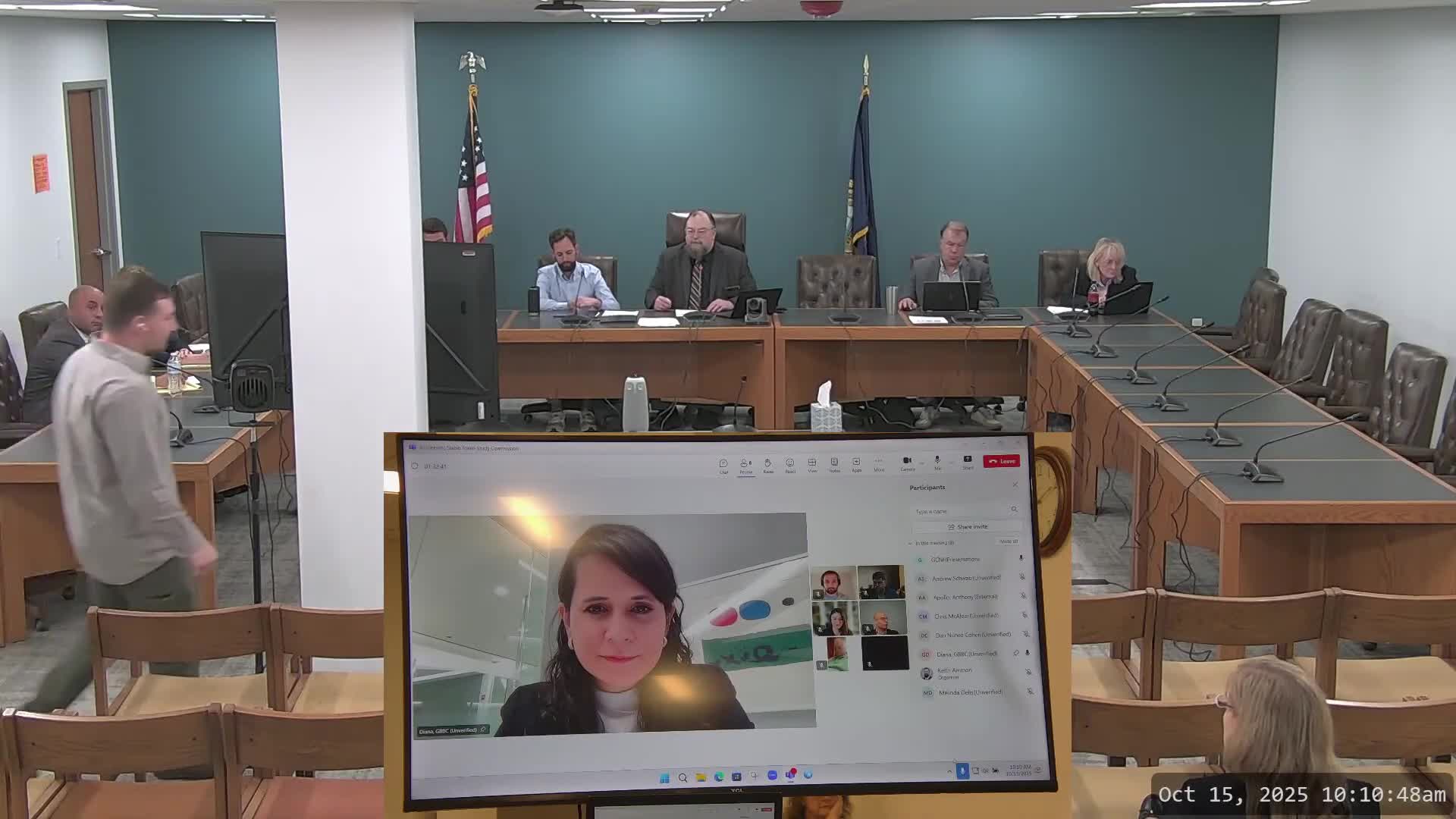Industry group tells New Hampshire commission global stablecoin use and regulation are expanding rapidly
October 16, 2025 | Commission to Study , House of Representatives, Committees , Legislative, New Hampshire
This article was created by AI summarizing key points discussed. AI makes mistakes, so for full details and context, please refer to the video of the full meeting. Please report any errors so we can fix them. Report an error »

Diana Barrio Zales, research lead at the Global Blockchain Business Council, told the Stable Token Study Commission on Oct. 16 that stablecoins and tokenized real-world assets are growing rapidly worldwide but still face regulatory and operational risks.
“ We focus a lot on harmonization of requirements,” Barrio Zales said. She described stablecoins as “generally, converging toward fiat backed or or somewhat asset backed,” and listed payment facilitation, remittances and decentralized finance as leading use cases.
Barrio Zales told commissioners the market has expanded quickly: “the total supply and market cap has grown at 50% or above year over year in the past couple of years with 200 to $250,000,000,000 in supply.” She said monthly transfer volume using stablecoins rose from about $1.9 trillion to $4.1 trillion in one year and that U.S.-pegged stablecoins dominate the market.
Why it matters: stablecoins can lower cross-border transaction costs and speed settlement, and tokenization can let portions of assets — from treasuries to real estate — trade on blockchains. But Barrio Zales emphasized the need for consistent definitions, oversight and disclosures so reserve backing and governance are transparent and the currency peg is maintained.
She outlined risks regulators and market participants must address: reserve and peg failures, counterparty and custodial risks, fragmented liquidity across platforms, and the question of how privately issued digital money would coexist with central bank digital currencies. She noted that regulatory frameworks differ by jurisdiction — citing the EU’s Markets in Crypto-Assets rules, Singapore’s evolving licensing framework, and ongoing developments in the U.S. Congress and agencies — and argued that harmonized rules and technical standards (ISO, IEEE) will be important for scaling the technology.
Barrio Zales also highlighted tokenization of real-world assets, describing tokenization as a lifecycle: identify the asset, create a legal structure, value and custody the underlying asset, issue a corresponding token on-chain, and address redemption and compliance. She said tokenization can increase fractional ownership and improve settlement velocity but does not create liquidity out of nothing.
The commission’s chair asked for Barrio Zales’s slides and contact information; she agreed to share materials and answer follow-up questions by email.
Looking ahead: Barrio Zales recommended that state-level study efforts focus on definitions, disclosure standards and interoperability, and coordinate with emerging national and international rules to avoid regulatory fragmentation.
“ We focus a lot on harmonization of requirements,” Barrio Zales said. She described stablecoins as “generally, converging toward fiat backed or or somewhat asset backed,” and listed payment facilitation, remittances and decentralized finance as leading use cases.
Barrio Zales told commissioners the market has expanded quickly: “the total supply and market cap has grown at 50% or above year over year in the past couple of years with 200 to $250,000,000,000 in supply.” She said monthly transfer volume using stablecoins rose from about $1.9 trillion to $4.1 trillion in one year and that U.S.-pegged stablecoins dominate the market.
Why it matters: stablecoins can lower cross-border transaction costs and speed settlement, and tokenization can let portions of assets — from treasuries to real estate — trade on blockchains. But Barrio Zales emphasized the need for consistent definitions, oversight and disclosures so reserve backing and governance are transparent and the currency peg is maintained.
She outlined risks regulators and market participants must address: reserve and peg failures, counterparty and custodial risks, fragmented liquidity across platforms, and the question of how privately issued digital money would coexist with central bank digital currencies. She noted that regulatory frameworks differ by jurisdiction — citing the EU’s Markets in Crypto-Assets rules, Singapore’s evolving licensing framework, and ongoing developments in the U.S. Congress and agencies — and argued that harmonized rules and technical standards (ISO, IEEE) will be important for scaling the technology.
Barrio Zales also highlighted tokenization of real-world assets, describing tokenization as a lifecycle: identify the asset, create a legal structure, value and custody the underlying asset, issue a corresponding token on-chain, and address redemption and compliance. She said tokenization can increase fractional ownership and improve settlement velocity but does not create liquidity out of nothing.
The commission’s chair asked for Barrio Zales’s slides and contact information; she agreed to share materials and answer follow-up questions by email.
Looking ahead: Barrio Zales recommended that state-level study efforts focus on definitions, disclosure standards and interoperability, and coordinate with emerging national and international rules to avoid regulatory fragmentation.
View full meeting
This article is based on a recent meeting—watch the full video and explore the complete transcript for deeper insights into the discussion.
View full meeting
